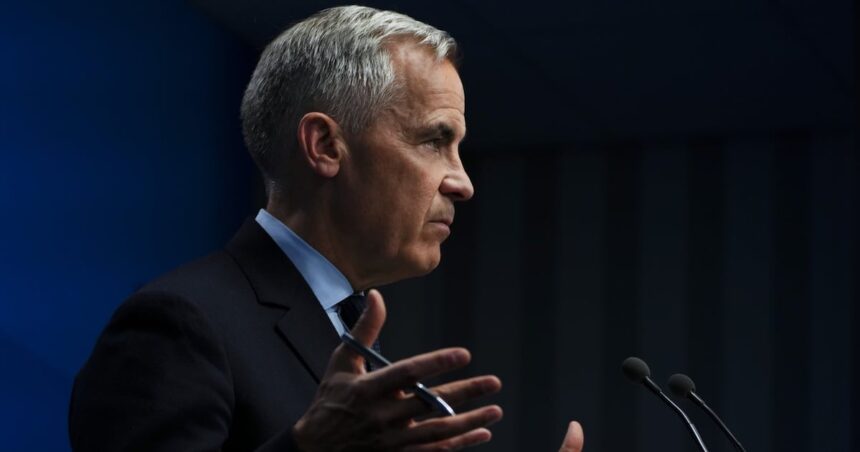As I settle into my chair at Parliament Hill’s press gallery after a long day speaking with public service workers, a troubling pattern has emerged. The annual pulse check of our federal workforce has revealed a deepening rift between Canada’s public servants and those who lead them.
The latest Public Service Employee Survey results paint a concerning picture. Only 57 percent of federal workers expressed confidence in their senior leadership—a five-point drop from last year’s already worrying numbers. Having covered Ottawa’s bureaucratic landscape for nearly a decade, I’ve rarely seen such a pronounced decline in institutional trust.
“We’re doing complex, demanding work while feeling increasingly disconnected from those making decisions,” explained Maryam Kessel, a policy analyst I met at a downtown Ottawa café. Her sentiment echoes throughout the 250,000-strong federal workforce that forms the backbone of Canadian governance.
The Treasury Board Secretariat released the survey data yesterday with little fanfare. Perhaps unsurprisingly so. The findings suggest fewer public servants believe their departments communicate effectively, with only 53 percent reporting they receive essential information from management—down from 58 percent last year.
This erosion of confidence comes at a precarious moment. The public service faces mounting pressure to deliver on ambitious climate initiatives, housing programs, and healthcare reforms while navigating budget constraints that have tightened since last fall’s economic update.
Public Service Alliance of Canada President Chris Aylward didn’t mince words when I reached him by phone. “These numbers confirm what we’ve been hearing from members for months. There’s a growing disconnect between leadership priorities and frontline realities.”
What makes these findings particularly troubling is their timing. The survey was conducted before February’s announcement of a 3 percent budget reduction across all departments—a move that has since triggered workforce reduction planning across multiple agencies.
Walking through the Centretown neighborhood where many public servants live, I spoke with Bernard Lapointe, a 22-year veteran of Employment and Social Development Canada. “The perception is that executives are increasingly detached from operational challenges,” he told me while waiting for his bus. “When leadership announces new initiatives without understanding implementation hurdles, trust inevitably suffers.”
The data reveals particularly sharp declines in confidence among departments handling Canada’s most pressing files. Environment and Climate Change Canada saw an eight-point drop in leadership confidence, while Housing and Infrastructure Canada registered a concerning ten-point decline.
Perhaps most telling is what public servants say about psychological safety. Only 64 percent feel they can speak up without fear of reprisal—down seven points since 2022. For a workforce that increasingly relies on internal expertise to navigate complex policy landscapes, this chilling effect on open communication raises serious questions about evidence-based decision-making.
Treasury Board President Anita Anand acknowledged the survey’s findings in a carefully worded statement, noting that “employee feedback is vital as we work to strengthen public service excellence.” Her office pointed to the recently launched Workplace Renewal Initiative as evidence of commitment to addressing these concerns.
But critics, including former Clerk of the Privy Council Michael Wernick, suggest deeper structural issues are at play. “When you see consistent downward trends across multiple departments, it signals systemic challenges in how the federal government manages change,” Wernick explained during our conversation at last week’s governance conference.
The impacts extend beyond workplace morale. Statistics Canada reported last quarter that processing times for federal services have increased by 12 percent compared to pre-pandemic levels. Meanwhile, internal government data obtained through access to information requests shows rising attrition rates among mid-career professionals—precisely the experienced talent needed to mentor the next generation.
Regina Hartwell, who studies public administration at Carleton University, offers historical context. “What we’re witnessing mirrors patterns from the mid-1990s program review era, when significant public service restructuring led to similar trust deficits. The difference today is the added complexity of hybrid work environments and digital transformation pressures.”
A concerning dimension is the regional disparity in leadership confidence. Public servants in Atlantic Canada and the territories reported significantly lower trust scores than their National Capital Region counterparts. This geographic divide threatens to undermine efforts to decentralize federal operations and build a more representative workforce.
The implications for Canadians themselves shouldn’t be overlooked. When public servants lose faith in leadership direction, service delivery inevitably suffers. From passport processing to immigration applications to benefit payments, the connective tissue between government policy and citizen experience depends on engaged, confident public employees.
Walking back to my car after interviewing a group of public servants at a Sparks Street restaurant, I’m struck by their dedication despite the challenges. These are professionals who have chosen careers of service, who believe deeply in the mission of good governance.
Their declining confidence in leadership isn’t just a workplace issue—it’s a governance challenge with implications for how effectively Canada can respond to increasingly complex public needs. As one veteran policy advisor put it before we parted ways: “When trust erodes from within, the capacity to build trust with Canadians inevitably follows.”
The question now facing Ottawa isn’t just how to interpret these troubling numbers, but what concrete steps leadership will take to rebuild the foundation of trust that effective public service requires.






